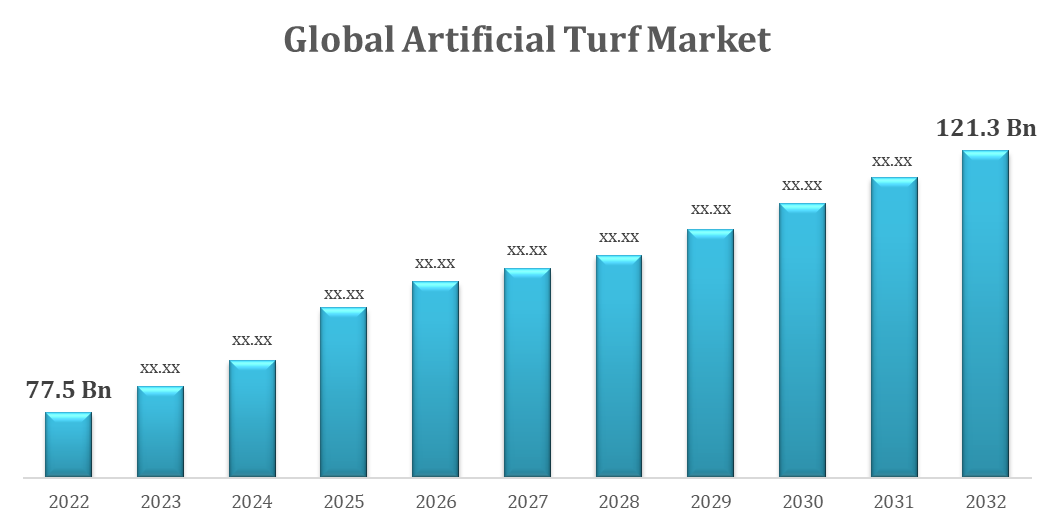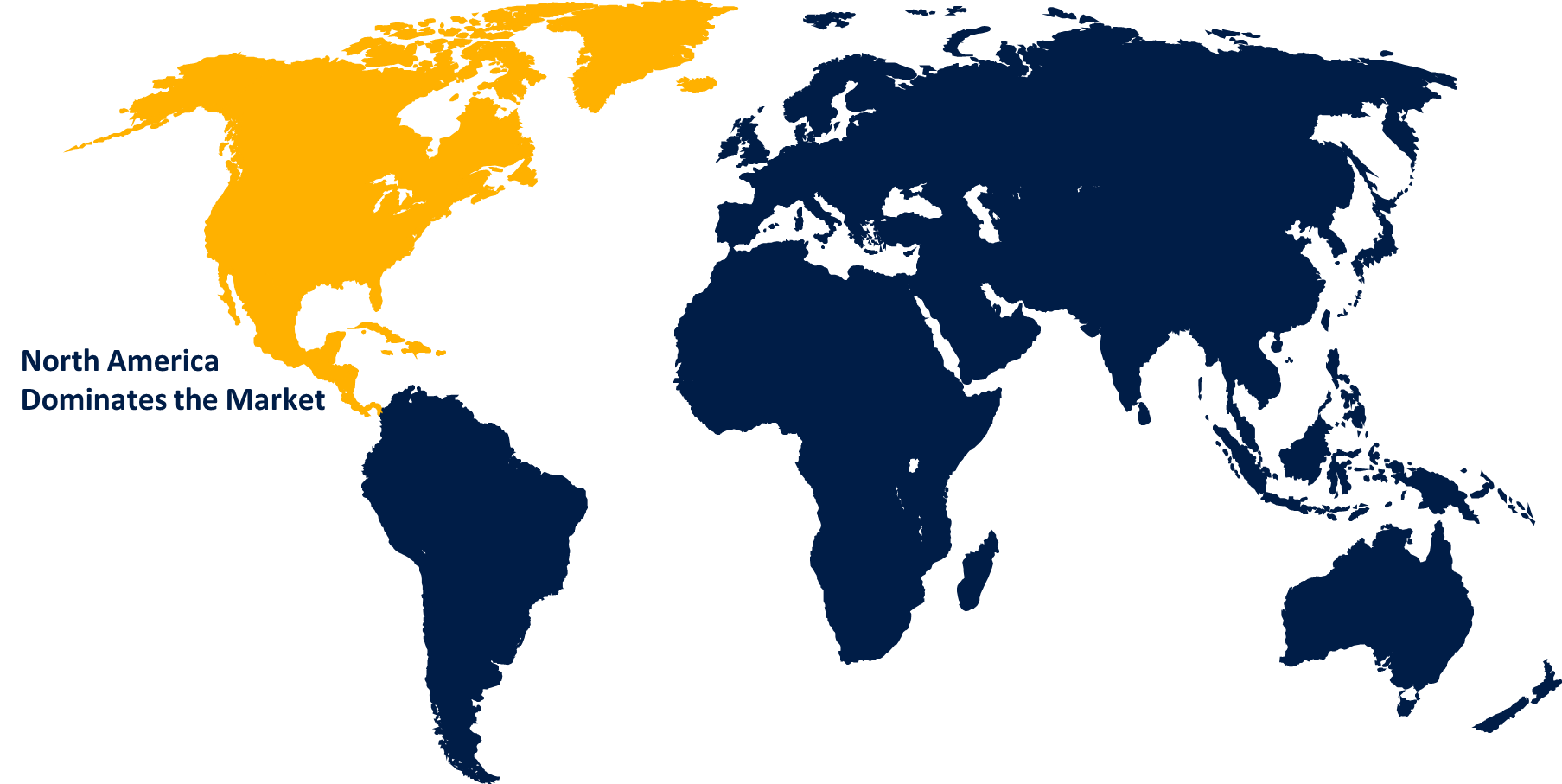Global Artificial Turf Market Size to worth USD 121.3 Billion by 2032 | CAGR of 7.9%
Category: Chemicals & MaterialsGlobal Artificial Turf Market Size to worth USD 121.3 Billion by 2032
According to a research report published by Spherical Insights & Consulting, the Global Artificial Turf Market Size to grow from USD 77.5 Billion in 2022 to USD 121.3 Billion by 2032, at a Compound Annual Growth Rate (CAGR) of 7.9% during the forecast period.

Get more details on this report -
Browse key industry insights spread across 200 pages with 150 market data tables and figures & charts from the report on the "Global Artificial Turf Market Size By Material (Polyethylene, Polypropylene, Nylon), By Application (Residential, Commercial, Sports), By Region, And Segment Forecasts, By Geographic Scope And Forecast 2022 - 2032". Get Detailed Report Description Here : https://www.sphericalinsights.com/reports/artificial-turf-market
Growing concerns about water scarcity, especially in arid places, make artificial turf an appealing substitute. It doesn't need to be watered, making it environmentally beneficial. Artificial turf requires less maintenance than real grass. There's always a green carpet—no need to weed or mow. It's not just on lawns in houses. There is a growing demand for commercial spaces, sports arenas, and playgrounds. It is similar to the recommended choice for hardy, environmentally friendly surfaces. More robust and realistic artificial turf has been created thanks to modern technologies. It's not only about appearances; feeling is as important. Artificial turf may become slightly heated in the sun.
Artificial Turf Market Value Chain Analysis
The primary materials used to make turf fibres are typically nylon, polyethylene, or polypropylene. These materials are supplied by the petrochemical or polymer industries. To create artificial turf, the manufacturing process is done to the essential components. The fibres are tufted into a backing material to do this, often in conjunction with a second backing for further rigidity. The turf is coated in a range of chemicals to increase durability, robustness, and UV protection. The backing, which is frequently made of fabric layers and coatings, determines stability. Infill materials like sand or rubber are used in certain artificial turfs to provide structure, cushioning, and support to the turf fibres. A link in the value chain is usually formed by these materials. Once artificial turf has been manufactured, it is sent to retailers, contractors, and other end users. This could involve a network of wholesalers and distributors. The process involves contractors and experts in artificial turf installation. This is a crucial step to ensure that the turf is installed appropriately for best results.
Artificial Turf Market Opportunity Analysis
As urbanisation increases, there is a growing need for low-maintenance landscaping choices. Artificial turf is the best option because of its enormous possibilities for both residential and commercial landscaping. The sports industry is quite lucrative. As more sports facilities look for options that are long-lasting and resistant to weather, artificial turf starts to emerge as the preferable substitute. Just picture all the football grounds, golf courses and football stadiums that are awaiting a green makeover. There is always room for improvement. The development of environmentally friendly and sustainable materials for artificial turf has the potential to completely change the game. If you can find out how to make a greener green, you might be onto something truly good. Companies are becoming more and more interested in finding ways to enhance their outdoor spaces, such as gardens and office courtyards.
With the construction of more residential and commercial buildings, artificial turf may find its way into landscape designs. Environmentally friendly, low-maintenance choices are options that builders and developers may select to enhance the overall beauty of their projects. Building new stadiums, leisure centres and sports facilities usually necessitates a thorough selection of playing grounds. Because artificial turf lasts longer and is more weather resistant, it is becoming a more common option for creating sports facilities. Artificial turf is a common choice for parks, public gardens, and other communal areas created during construction projects because to its minimal maintenance requirements and attractive appearance. When constructing new homes, landscaping is usually taken into consideration in the residential sector.
The initial expenditures of installing artificial turf could be higher than those of using genuine grass. Even though there will be long-term maintenance savings, this may deter customers on a tight budget. Artificial turf typically retains and absorbs heat more effectively than natural grass. This could limit the turf's use to certain hours and make it uncomfortable in hotter climates. Some others are still envisioning the less realistic artificial turf from previously. It might be challenging to shake the notion that artificial turf doesn't have the same look and feel as real grass. Rubber and other filler materials have raised questions about environmental and health effects. Finding safe, substitute infill options is a never-ending task.
Insights by Material
The polyethylene segment accounted for the largest market share over the forecast period 2023 to 2032. Polyethylene fibre turf is robust and able to withstand a variety of weather conditions as well as high foot traffic. Artificial turf has a long lifespan because it is durable. Polyethylene fibres have exceptional durability, which enables them to take on their former shape even after being crushed. This feature increases the turf's ability to recover from the impacts of play or athletics. Artificial turf made of polyethylene is low maintenance. It's a tempting substitute for those seeking a hassle-free, green lawn because it doesn't need to be fertilised, mowed, or watered. Polyethylene is a versatile material that may be used to make a wide range of artificial turf products, including landscape grass for home lawns and sports turf for sporting fields.
Insights by Application
Sports segment is witnessing the fastest market growth over the forecast period 2023 to 2032. With artificial turf, playability is constant regardless of the weather. Even in the event of extreme rain or snowfall, sports can go on uninterrupted because artificial grass is not as resilient as natural grass. Sports fields are prone to severe damage and deterioration. Particularly when it is manufactured especially for sports purposes, artificial grass is engineered to survive and can tolerate the intense traffic involved in sporting events and practises. Because artificial turf offers a level playing surface, it reduces the likelihood of uneven patches or divots. This is particularly crucial for sports like football and soccer, where the condition of the playing field can significantly impact the result of the game.
Insights by Region

Get more details on this report -
North America is anticipated to dominate the Artificial Turf market from 2023 to 2032. Artificial turf has grown in popularity in sporting stadiums around North America as a result of its love for sports. You name it: football, baseball, soccer. The demand for the sports industry is pushing things forward. Homeowners in North America are starting to embrace the idea of having a lush, green lawn without all the maintenance. Homes using artificial turf as a landscape element are becoming more and more popular, especially in areas with scarce water supply or severe weather. Commercial environments, such as corporate courtyards and rooftop gardens, are beginning to use artificial turf. Businesses are starting to see the aesthetic and low-maintenance benefits. North America is the location of the centre for technical innovation. The market for artificial turf gains from ongoing material advancements that make turf more realistic and sustainable.
Asia Pacific is witnessing the fastest market growth between 2023 to 2032. In Asia-Pacific, the construction of sporting facilities is booming. Due to its all-weather performance and longevity, artificial turf is rapidly overtaking natural turf as nations invest in athletic facilities. In certain parts of the Asia-Pacific region, extreme weather conditions may act as a barrier to the establishment of natural grass. Since artificial turf provides a dependable green surface that is weather-resistant, it is a popular substitute. Asia-Pacific region is home to an inventive industrial hub. The growth and development of the artificial turf market are facilitated by technological advancements in the manufacturing process.
Major players in the market
- The DOW Chemical Company
- FieldTurf
- Synlawn Artificial Grass
- CoCreation Grass Corporation
- Global Syn-Turf, Inc.
- TigerTurf
- ForestGrass
- Controlled Products, LLC (GrassTex)
- Sportfield Deutschland Holding GmbH (AstroTurf)
- Victoria PLC (Avalon Grass)
Market Segmentation
This study forecasts revenue at global, regional, and country levels from 2023 to 2032.
Artificial Turf Market, Material Analysis
- Polyethylene
- Polypropylene, Nylon
Artificial Turf Market, Application Analysis
- Residential
- Commercial
- Sports
Artificial Turf Market, Regional Analysis
- North America
- US
- Canada
- Mexico
- Europe
- Germany
- Uk
- France
- Italy
- Spain
- Russia
- Rest of Europe
- Asia Pacific
- China
- Japan
- India
- South Korea
- Australia
- South America
- Brazil
- Argentina
- Colombia
- Middle East & Africa
- UAE
- Saudi Arabia
- South Africa
About the Spherical Insights & Consulting
Spherical Insights & Consulting is a market research and consulting firm which provides actionable market research study, quantitative forecasting and trends analysis provides forward-looking insight especially designed for decision makers and aids ROI.
Which is catering to different industry such as financial sectors, industrial sectors, government organizations, universities, non-profits and corporations. The company's mission is to work with businesses to achieve business objectives and maintain strategic improvements.
CONTACT US:
For More Information on Your Target Market, Please Contact Us Below:
Phone: +1 303 800 4326 (the U.S.)
Phone: +91 90289 24100 (APAC)
Email: inquiry@sphericalinsights.com, sales@sphericalinsights.com
Contact Us: https://www.sphericalinsights.com/contact-us
Follow Us: LinkedIn | Facebook | Twitter
Need help to buy this report?